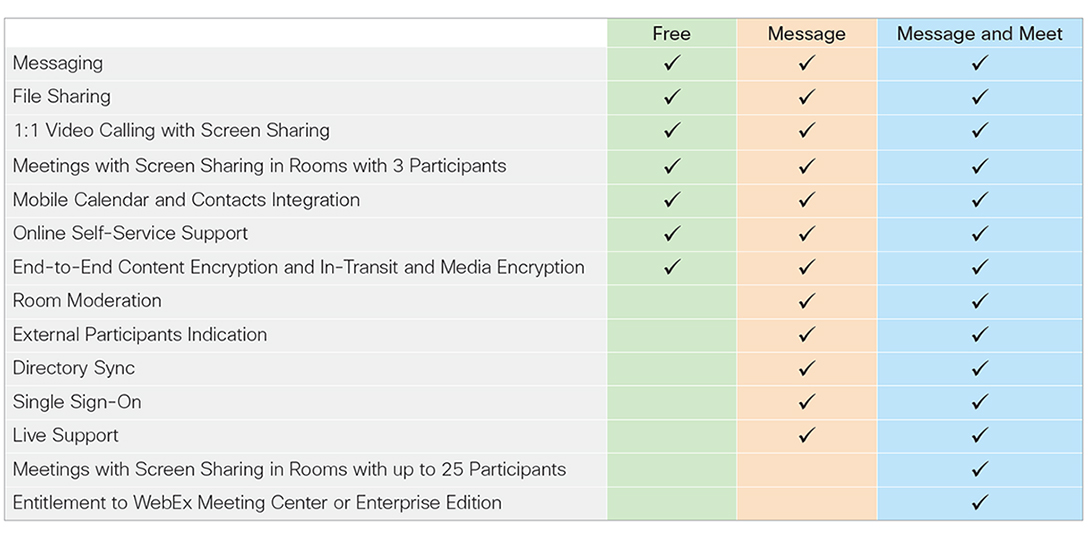Last Updated on October 6, 2020 by GrahamWalsh Back at Microsoft Ignite 2019, Microsoft showcased to the world a new feature called Guest Join Access for Zoom and Webex on the Microsoft Teams Rooms (MTR) systems. See a full overview here. Fast forward ten months and we now have Guest Join Access for Zoom that was in testing and now released. Zoom, Teams, Skype, Webex: Business collaboration software becoming a battleground, Aternity says. By Brandon Vigliarolo in Software on February 11, 2021, 3:00 AM PST Hybrid work models are going.
- Webex Vs Zoom 2020
- Webex Teams Zoom Integration
- Zoom Ms Teams Webex Comparison
- Zoom Gotomeeting Skype Webex Comparison
- Teams Join Zoom Meeting
7th October 2020
Webex Vs Zoom 2020
The past six months have brought us many new things: meetings in clandestine jogging bottoms; a voyage of the depths of Netflix's back catalog; sourdough fanaticism; yeast shortages brought on by the aforementioned fanaticism, and arguably, one of the most heated technological debates in modern times: should you use Teams or Zoom as a company?
Video-conferencing has surged in usage like never before, and with global companies such as Google and BP announcing plans to move to a hybrid model of working, there's no sign of it slowing down any time soon. We've observed a change in the market from UC to UCaaS. The historical question of Skype for Business Vs. Cisco has been replaced with a newer consideration.
Webex Teams Zoom Integration
Microsoft Teams or Zoom?
A No-Fuss Overview of Microsoft Teams

Released in 2017, 6 years after Skype’s acquisitions, Microsoft Teams was an obvious business-facing solution for those already using 365. It sits neatly amongst the apps people already use to create a centralized workspace for file sharing, communication, and collaboration. It also avoids many of the peer-to-peer issues of Skype.
And Zoom
Zoom Ms Teams Webex Comparison

Zoom has commanded the market's attention like no other over the last year, successfully forging a place in the classroom and businesses thanks to its ease of use and no-download-needed approach. These features alone gave Zoom an immediate advantage over other traditional platforms that required downloads, accounts, and complex scheduling. Simply start a meeting and share the link: Voila! You have a video call.
It's no surprise Zoom now has a 42.8% share of the web-conferencing market. But that still leaves over 50% in the hands of other competitors.
Is there a unified video-conferencing service you should be adopting as a business? In short, no.
Life Isn't binary
Contrary to what we might all prefer, the answers to many questions are often located in the grey area—the Teams Vs. Zoom’s debate is precisely the same. Yes, each service has its own merits, functionalities, and drawbacks, but the chances are that you'll come into contact with a client or team member who might have a different preference to your own. Do you ask them to switch to your video-provider before scheduling a call? Of course not, you work with them across a variety of platforms and tools.
As around half of the workforce moved to remote working in April, Interoperability suddenly became very relevant to work systems.
What is Interoperability?
'Interoperability is the ability of different systems, devices, applications, or products to connect and communicate in a coordinated way, without effort from the end-user. Functions of interoperable components include data access, data transmission, and cross-organizational collaboration, regardless of its developer or origin. Similar to compatibility, Interoperability helps organizations achieve higher efficiency and a more holistic view of information.'

TLDR: it refers to a company's ability to communicate and collaborate effectively across different technologies. Very relevant when it comes to remote working in teams.
The whole Zoom Vs. Teams debate doesn't just raise points about UC preference; it highlights the issues that arise when organizations have to compensate for a multitude of technologies. And with the globalization of markets and workforces, working across various platforms and applications is unavoidable. So what is the solution?

Create a Flexible Workplace
There is no ‘one-size fits all’ product when it comes to digital collaboration, a blended approach is more realistic. A solution is to create a flexible and forgivable workplace that works seamlessly with different platforms, applications, and machines.
The non-binary nature of technology is something we addressed when designing Launcher. We wanted to create a product that enables easy launching of video calls on the meeting room screen regardless of what application people use. Launcher's smart room calendar picks up your video calls and meetings, saving precious time; all you need to do is tap a button to start or join your calls. Teams, Zoom, Webex, Google Meet, Skype for Business, GoToMeeting, Lifesize...Launcher works with the tools you use.
It also eliminates the need for touching shared computers, with contact-free call sharing to the meeting room screen on the Launcher mobile app. Plus, with built-in security mode - one tap clears your footprint, closing apps and clearing any browsing history.
Want to simplify your collaboration?
Book a personalized demo of Launcher
About the Author
Zoom Gotomeeting Skype Webex Comparison

Teams Join Zoom Meeting
This article is written by Julie Adams, a Communication & Content Specialist at DisplayNote. Julie is a writer and science, psychology & music enthusiast.
